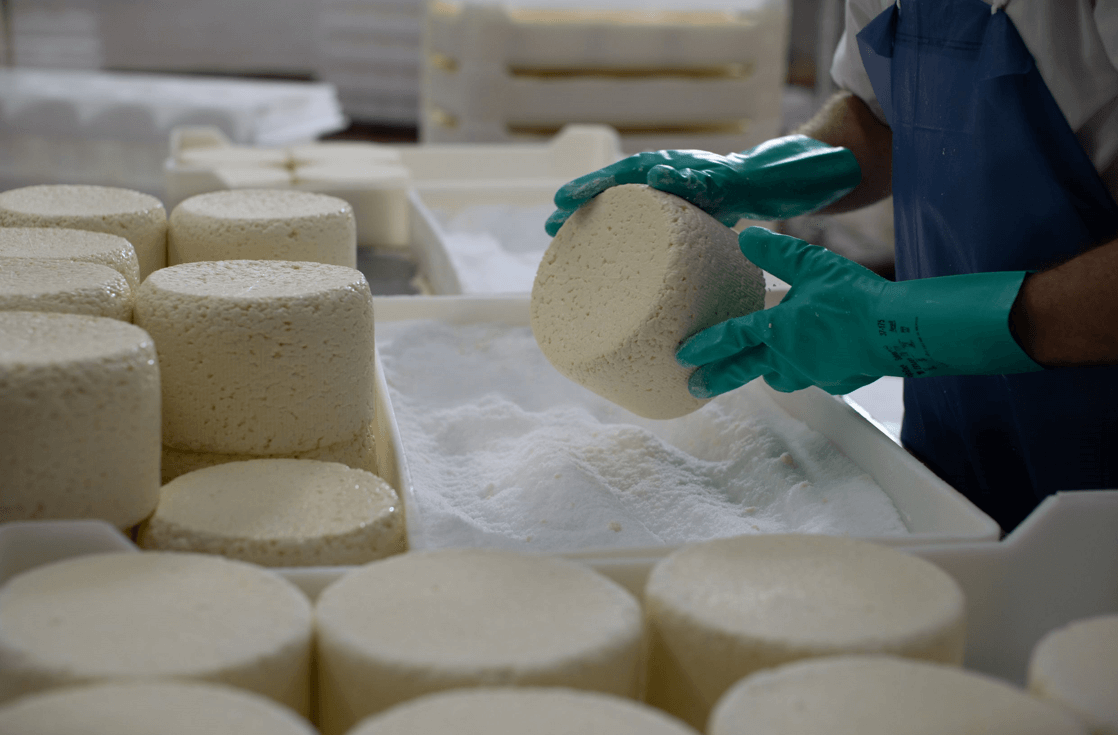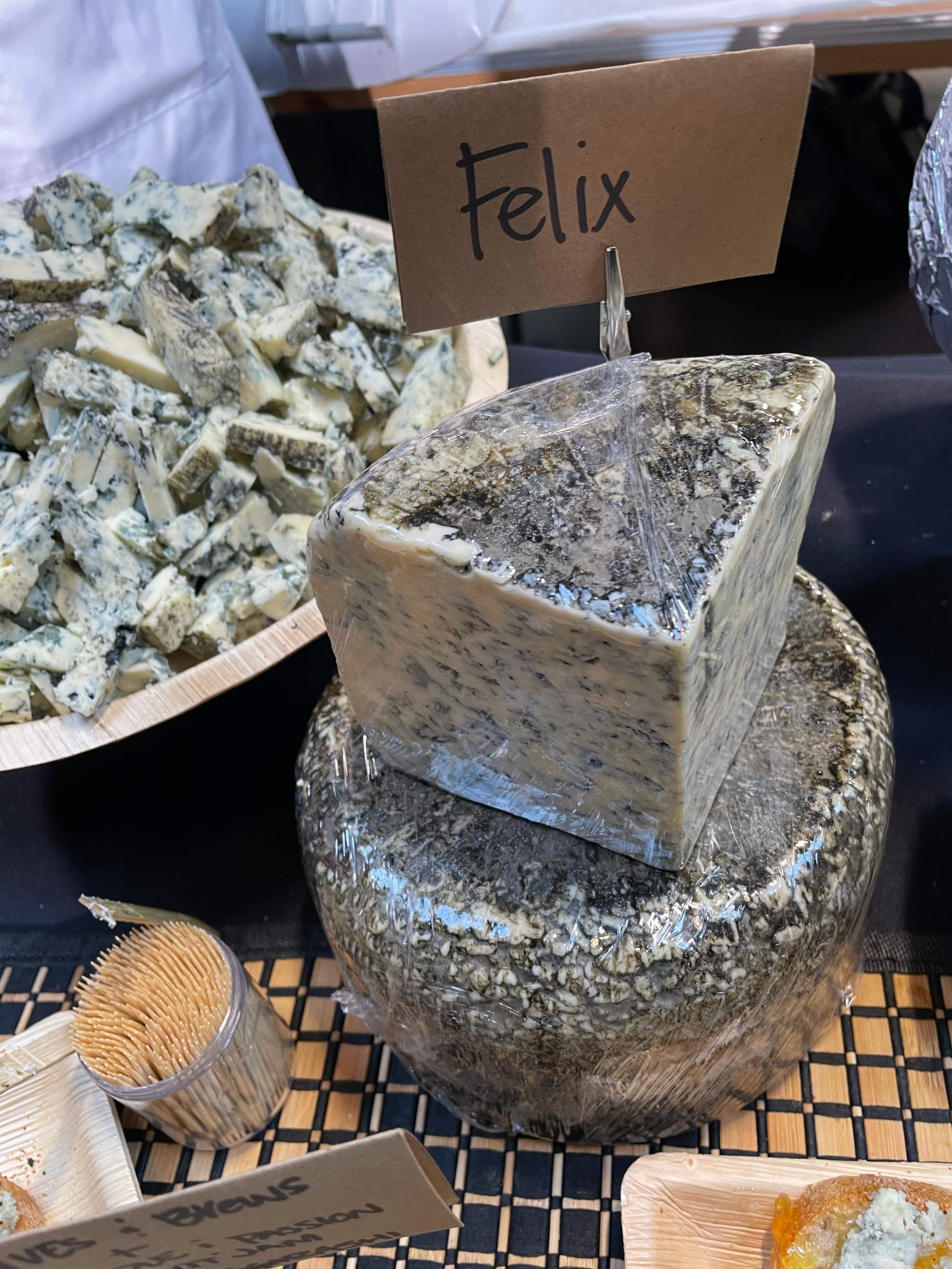How Caves of Faribault is Honoring Minnesota's Blue Cheese Legacy
When most people think of blue cheese, they don’t think of Minnesota. They may have visions of France’s famous Roquefort or Italy’s Gorgonzola but it turns out that Minnesota holds a special place in America’s blue cheese production. That’s a tradition that Caves of Faribault is keeping alive.
Rueben Nilsson photo courtesy Caves of Faribault
Origins of Minnesotan Blue Cheese
In the 1930s, cheesemaker Felix Frederiksen had the idea of making blue cheese, taking inspiration from Roquefort that is made in limestone caves in France. He found the sandstone caves of Faribault that had been used by Fleckenstein Brewing Co. until the brewery had been shut down during Prohibition. Opportunity for American blue cheese struck during and after World War II, given the challenges of importing cheese and the low cost of milk. “Farmers and cooperatives were looking for more value-added products” for cheese, explains Rueben Nilsson, General Manager and head cheese maker at Faribault, “and the USDA [United States Department of Agriculture] research stations hit on the idea of blue cheese as a value-added dairy product.”
Open vats photo credit Josh Ford of Ford Photography
Frederiksen decided to open up his own cheese company, called Treasure Cave, Inc., which Nilsson says was the first producer of commercial blue cheese in the United States. For a period of time, St. Paul was considered the blue cheese capital of the US during and after World War II. Nilsson has heard estimates that in the late 1950s/1960s, that 50 percent of the cheese came from Minnesota! During Frederiksen’s time, he expanded the caves for Treasure Cave until the company closed in 1991.
Caves of Faribault courtesy Caves of Faribault
Bringing Back the Caves of Faribault
In 2001, three cheesemakers from the old plant —Jeff Jirik, Joe Sherman, and Randy Ochs— got together to “bring back blue cheese to Faribault,” says Nilsson. Faribault was born, producing blue cheeses once again from the sandstone caves.
The caves offer some natural advantages for cheesemaking. Since the sandstone is so porous that when the sun shines down on the bluff face, the water evaporates, giving “natural humidification” in the caves, Nilsson explains. Plus the ammonia produced by the cheeses is absorbed by the moisture on the cave walls, reducing the need to bring in fresh air for the cheese as it ages.
Hand salting Josh Ford of Ford Photography
Of course, there’s other challenges in making blue cheese, such as cultivating the right microbial environment, adjusting temperatures, and more. Overall, you end up doing the opposite of making Cheddar, Swiss or gouda, Nilsson explains, where you are concerned with making a tight fit wheel. With blue cheese, you want nooks and crannies in the curds to allow for blue cheese veining. Nilsson estimates from start to finish with hand packaging, each cheese is handled by 10-12 people.
The company has been folded under the umbrella with other cheese companies, first with Swiss Valley Farms Cooperative in 2010 and then Prairie Farms Dairy in 2017. Faribault gets most of its milk from a single dairy, with a few exceptions like their organic cheeses. Faribault also partners with other cheesemakers to affinage cheeses in Faribault Caves.
Faribault’s Blue Cheeses
Faribault makes 4 blue cheeses, 2 of which, the Amablu and St. Pete’s Select Blue Cheese are close to the original blue cheeses made in the past and Amagorg is their version of gorgonzola. But with Felix however, they’ve taken a similar approach to the traditional recipes but changed the affinage process to foster “natural rind” development, says Nilsson. Instead of the tangy and peppery taste that many American blues have, it is a more mellowed out cheese with a more earthy, mushroomy taste and a distinct almost candy sweetness. Nilsson says it has the terroir of the caves themselves. It ends up almost tasting like it's made with sweet cream, even though it is not, explains Erin Clancy, Regional Sales Manager at Faribault. She says that people who declare they hate blue cheese are actually surprised at the Felix for its mildness.
They make about three million pounds of cheese each year, which Nilsson notes is a drop in the bucket compared to other cheesemakers. But they see their cheese, not as a commodity product, but part of a larger tradition within the community bringing jobs and keeping the tradition alive.
Clancy sums it up best: “Even though you evolve something tasty and create different products it's still based on a lot of the roots of why Jeff opened it. With evolution, there’s still tradition.”





